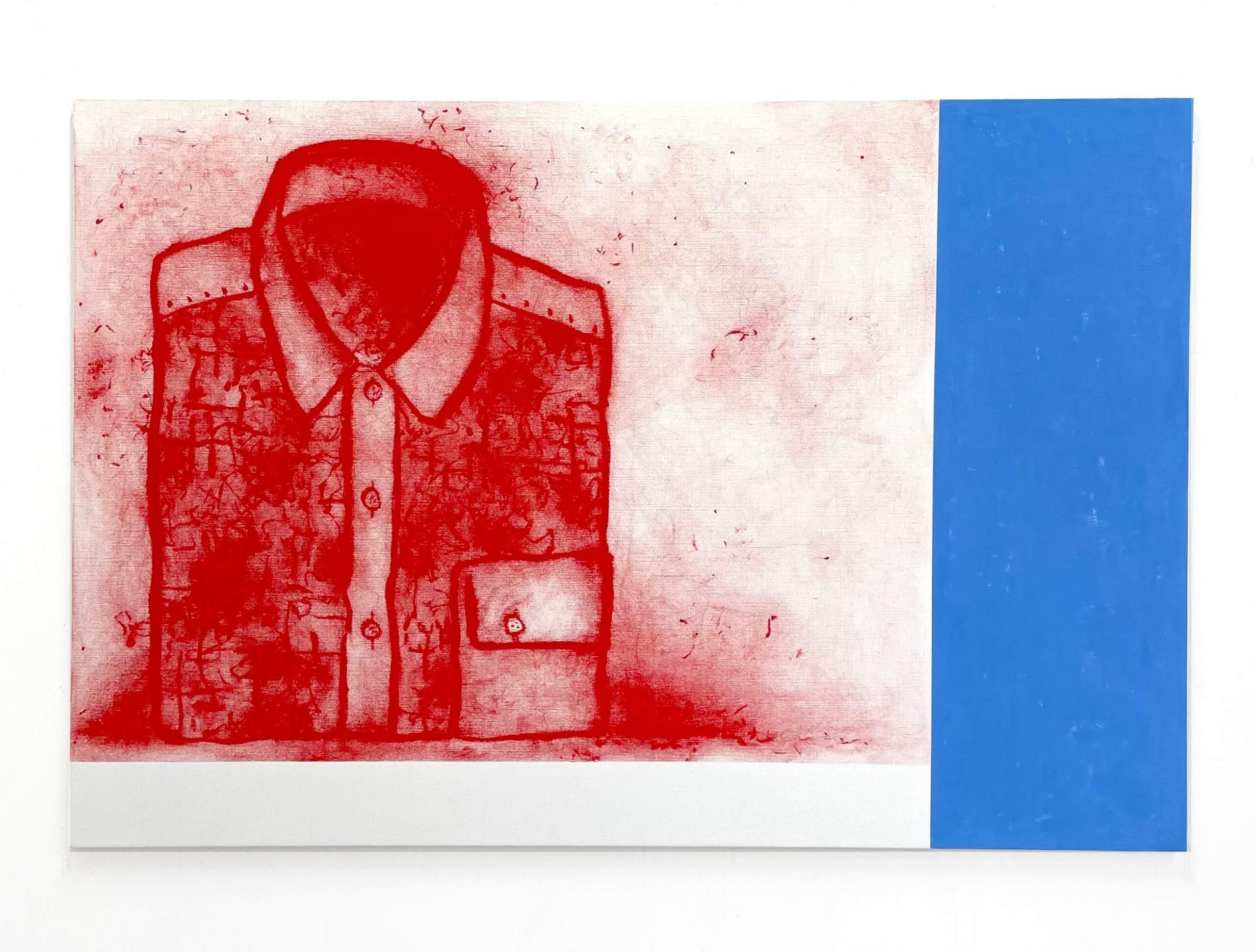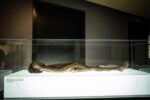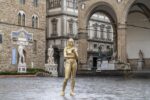About Painting II

Una mostra collettiva che, riecheggiando la
precedente About Painting, intende presentare un’articolata panoramica sulla pittura contemporanea.
Comunicato stampa
Rolando Anselmi is thrilled to announce the opening of About Painting II, a group exhibition that - by
echoing last year’s About Painting - aims to present an articulate overview that explores contemporary
painting. The relevance of this medium is examined through the work of nine international artists who,
diverse in their approaches and techniques, have been invited to exhibit their personal understanding
of the medium itself and to expand the conventional debate around the notion of painting.
This second event will present works by Thomas Arnolds (b. 1975, DE), Rachael Bos (b. 1999, USA),
Enrico Della Torre (b. 1988, ITA), Katelyn Eichwald (b. 1987, USA), Alina Grasmann (b. 1989, DE),
Thomas Lawson (b. 1951, GB), Jennifer J. Lee (b. 1977, USA), Yuri Yuan (b. 1996, CHN) e Sophie
Varin (b. 1993, FR)
The exhibition opens with Sophie Varin, whose works combine familiar moments and emotions into
dream-like scenarios. The vivid tones of Who Knows and We Don't Like Your House Either expand the
space of a narrow medium, the figures are elongated by intense lighting and the atmosphere seems
to paint lived moments that echo in the mind. In J. Dokić, Rachael Bos captures the gestures and
movements of the tennis player, cropped in such a way as to render the figure almost anonymous and
place for experimentation with abstraction, fixing the action with a firm lens in her photographic cut.
Enrico Della Torre investigates the nature of painting, in an attempt to study less explored places,
legitimizing a trace or empty space as the only element of the painting. Through symbolism,
metaphors and magic realism, Yuri Yuan paints outdoor landscapes that become projections of
psychological states. In Ski Lift and Love Letter, pink is an element of insecurity, the brushstrokes give
a strong sense of movement, conveying a melancholic feeling of moments that are coming to an end.
Proceeding to the lower floor, the visitor is greeted by Dream of the arrogant prince, which, together
with Roman head I, testifies to Thomas Lawson's focus on the depiction of the human form through
multiple allegorical possibilities: his works intimately explore bodies and their psychological depths in
its most treacherous manifestations, so the painting is a way of understanding how subjects relate to
their social environments. An everyday gesture such as cutting becomes, in Katelyn Eichwald's Cut
and Cutting, an opportunity to study movements, fixing gestures and habits in search of the most
unexplored details. Her works portray the serenity of digression in habitual movements and the
potential for discovery in slow moments. American culture, its architecture, literature and cinema
converge in the series Sculpting in Time, where Alina Grasmann combines the external appearance
of the places portrayed with the feelings generated by them. Grasmann paints places and actions that
live in a dilated instant, yet appear as if frozen in the artist's imagination and in the visitor's mind.
Without resorting to symbolism, the scenes sculpted in time offer the possibility of being explored,
experienced and interpreted in their multiple subjective meanings. Thomas Arnolds reflects on the
possibilities of painting: in the series Run, the artist develops a complex and consistent position that
negotiates central issues of the medium in a coherent balance of at first glance contradicting designs:
abstraction and figuration, minimal and gestural, space and image. Jennifer J. Lee portrays
randomly chosen images with an acute spatial and formal research, painting on a thick burlap that
degrades the mechanical process of photography. Untitled and Untitled (Desert Spoon) are
meticulously constructed in an attempt to disassemble an image, analyse it in its details and then
reconstruct it.
Rolando Anselmi è lieto di annunciare About Painting II, una mostra collettiva che, riecheggiando la
precedente About Painting, intende presentare un’articolata panoramica sulla pittura contemporanea.
La rilevanza di questo mezzo viene esaminata attraverso il lavoro di nove artisti internazionali, diversi
per metodologia e tecnica, invitati qui a mostrare la loro personale comprensione del medium pittorico
e ad espandere il dibattito convenzionale intorno alla nozione di pittura.
Questo secondo capitolo presenterà opere di Thomas Arnolds (b. 1975, DE), Rachael Bos (b.1999,
USA), Enrico Della Torre (b. 1988, ITA), Katelyn Eichwald (b. 1987, USA), Alina Grasmann (b.1989,
DE), Thomas Lawson (b. 1951, GB), Jennifer J. Lee (b. 1977, USA), Yuri Yuan (b. 1996, CHN) e
Sophie Varin (b. 1993, FR).
La mostra si apre con Sophie Varin, le cui opere combinano momenti ed emozioni familiari in scenari
onirici. I toni vividi di Who Knows e We Don't Like Your House espandono lo spazio di un supporto
ristretto, le figure sono allungate da un'illuminazione intensa e l'atmosfera sembra dipingere momenti
di vissuto che si ripetono nella mente. In J. Dokić Rachael Bos cattura i gesti e i movimenti della
tennista, ritagliati in modo da rendere la figura quasi anonima e luogo di sperimentazione
dell’astrazione, fissando l’azione con una lente ferma e decisa nel suo taglio fotografico. Enrico Della
Torre indaga la natura della pittura, nel tentativo di studiarne i luoghi meno esplorati, legittimando una
traccia o uno spazio vuoto come unico elemento del quadro. Attraverso il simbolismo, le metafore e il
realismo magico, Yuri Yuan dipinge paesaggi esterni che diventano proiezioni degli stati psicologici.
In Ski Lift e Love Letter il rosa è elemento di insicurezza, le pennellate conferiscono un forte senso di
movimento, restituendo una sensazione malinconica di momenti che stanno per finire. Procedendo al
piano inferiore, il visitatore è accolto da Dream of the arrogant prince che, insieme a Roman head I,
testimonia l’attenzione di Thomas Lawson per la raffigurazione della forma umana attraverso
molteplici possibilità allegoriche: le sue opere esplorano intimamente i corpi e la loro profondità
psicologica nelle sue manifestazioni più infide, così la pittura è un modo per indagare come i soggetti
si relazionano con i loro ambienti sociali.
Un gesto quotidiano come il taglio diventa, in Cut e Cutting di Katelyn Eichwald, un'occasione per
studiare movimenti, fissare gesti e abitudini alla ricerca dei dettagli più inesplorati. Le sue opere
ritraggono la serenità della digressione nei movimenti abituali e il potenziale di scoperta nei momenti di
lentezza. La cultura americana, la sua architettura, la letteratura e il cinema convergono nella serie
Sculpting in Time, dove Alina Grasmann combina l'aspetto esteriore dei luoghi ritratti con le
sensazioni da essi generate. Grasmann dipinge luoghi e azioni che vivono in un istante dilatato, ma
che appaiono come congelati nell'immaginazione e nella memoria dell'artista. Senza ricorrere al
simbolismo, le scene scolpite nel tempo offrono la possibilità di essere esplorate, vissute e
interpretate. Thomas Arnolds riflette sulle possibilità della pittura: nella serie Run, l'artista sviluppa
una posizione complessa che negozia le questioni centrali del mezzo in un equilibrio coerente di
progetti a prima vista contraddittori: astrazione e figurazione, minimalismo e gestualità, spazio e
immagine. Jennifer J. Lee ritrae immagini scelte casualmente con un'acuta ricerca spaziale e
formale, dipingendo su una spessa tela di iuta che degrada il processo meccanico della fotografia.
Untitled e Untitled (Desert Spoon) sono costruite in modo minuzioso nel tentativo di smontare
un’immagine, analizzarla nei suoi dettagli e, in seguito, ricostruirla.



